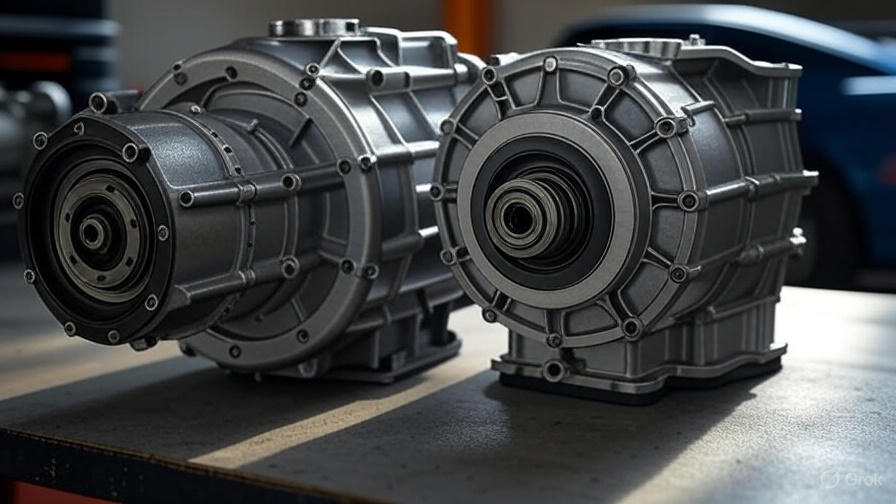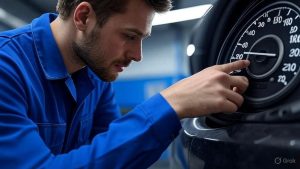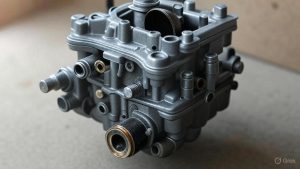Engine enthusiasts and performance seekers have long debated which supercharger design delivers the best results. The battle between centrifugal, roots, and twin screw superchargers continues to spark heated discussions in garages, race tracks, and online forums worldwide. Each type offers distinct advantages and trade-offs that can make or break your build.
This comprehensive comparison breaks down everything you need to know about these three supercharger technologies. You’ll discover how each design works, their real-world performance characteristics, cost considerations, and which applications suit each type best.
How Superchargers Transform Engine Performance
Superchargers force more air into your engine’s combustion chambers than natural aspiration alone can achieve. This increased air density allows for more fuel to be burned, creating significantly more power output. Unlike turbochargers that rely on exhaust gases, superchargers connect directly to the engine’s crankshaft through belts, gears, or chains.
The fundamental principle remains consistent across all supercharger types: compress incoming air to increase its density before it enters the cylinders. However, the methods these three designs use to achieve this compression differ dramatically in their mechanical approach and resulting performance characteristics.
Modern supercharger technology has evolved to provide reliable, substantial power gains across various engine configurations. From street-driven muscle cars to purpose-built race machines, forced induction systems can double or triple an engine’s output when properly implemented.
Centrifugal Superchargers: Turbo-Like Power Without Lag
Centrifugal superchargers resemble turbochargers in their internal design but operate through direct mechanical drive from the engine. These units spin an impeller at extremely high speeds—often exceeding 50,000 RPM—to compress incoming air through centrifugal force.
The impeller design creates a smooth, progressive power delivery that builds with engine RPM. At low engine speeds, centrifugal superchargers produce minimal boost. As engine revs climb, boost pressure increases exponentially, delivering impressive top-end power gains.
Internal Components and Operation
The heart of a centrifugal supercharger consists of a precision-machined impeller wheel housed within a carefully designed volute casing. High-speed bearings support the impeller shaft, which connects to the engine through a gear-driven system that dramatically increases rotational speed.
Air enters the center of the impeller and gets flung outward by centrifugal force. The volute casing collects this high-velocity air and converts its kinetic energy into pressure through a diffusion process. This compressed air then flows to the engine’s intake manifold.
Most centrifugal units incorporate internal step-up gears with ratios ranging from 6:1 to 10:1. These gear systems allow the impeller to reach optimal speeds while the engine operates at normal RPM ranges. Quality units feature precision-ground gears and advanced lubrication systems to ensure reliability at extreme speeds.
Performance Characteristics
Centrifugal superchargers excel at high-RPM performance applications. Their boost curve mirrors engine speed, creating a natural, progressive power delivery that many drivers prefer over the instant hit of positive-displacement designs. Peak boost typically occurs at redline, making these units ideal for road racing and high-speed applications.
Heat generation remains relatively low compared to roots-type superchargers. The centrifugal compression process produces less temperature rise per pound of boost, allowing for denser air charges and improved detonation resistance. This thermal efficiency translates to better power potential with pump gasoline.
Installation flexibility represents another key advantage. Centrifugal superchargers mount remotely from the intake manifold, allowing creative placement options that can improve weight distribution and packaging in tight engine bays. Standard V-belt or serpentine belt drives simplify installation compared to complex bracket systems required by other supercharger types.
Advantages of Centrifugal Design
The progressive power delivery of centrifugal superchargers provides excellent traction characteristics for street driving and road racing. Power builds smoothly with RPM, allowing drivers to modulate boost output through throttle and gear selection. This controllable power delivery reduces tire spin and improves lap times on technical circuits.
Efficiency ratings for quality centrifugal superchargers often exceed 75%, meaning less parasitic power loss compared to positive-displacement alternatives. Higher efficiency translates to better fuel economy under moderate driving conditions and more net power gain from each pound of boost pressure.
Maintenance requirements stay minimal due to the simple internal design. Quality units feature sealed bearings that require no regular service for thousands of hours of operation. The gear case typically needs oil changes at extended intervals, similar to a transmission service schedule.
Disadvantages and Limitations
Low-end torque production suffers with centrifugal superchargers. These units provide minimal boost at idle and low RPM, making them unsuitable for applications requiring immediate throttle response. Street-driven vehicles may feel sluggish during city driving and parking lot maneuvers.
The high rotational speeds demand precision manufacturing and quality materials. Cheaper centrifugal superchargers often suffer from bearing failures, gear problems, and impeller damage. Quality units command premium prices that can exceed the cost of comparable positive-displacement alternatives.
Installation complexity increases due to the belt-driven design requiring precise alignment and tensioning. Improperly installed systems can suffer from belt slip under boost, reducing performance and potentially damaging components. Remote mounting also requires additional plumbing and potential intercooling considerations.
Roots Superchargers: Instant Power and Classic Style
Roots superchargers represent the oldest and most recognizable forced induction technology. These positive-displacement pumps move fixed volumes of air with each revolution, creating immediate boost response from idle to redline. The distinctive profile of roots blowers has become synonymous with American muscle car culture and drag racing.
Named after the Roots brothers who patented the design in 1860, these superchargers originally served industrial applications before Hot Rod pioneers adapted them for automotive use. Modern roots superchargers incorporate advanced rotor profiles and precision manufacturing while maintaining the fundamental operating principles.
Mechanical Design and Function
Two or three intermeshing rotors spin within a precisely machined housing, trapping air between the rotors and case walls. As the rotors turn, they carry trapped air from the inlet to the outlet without internal compression. The actual compression occurs downstream when this displaced air encounters restriction from the engine’s intake system.
Rotor profiles have evolved significantly from the original straight-lobe design. Modern twisted rotors reduce noise, improve sealing, and enhance volumetric efficiency. The helical twist allows for smoother airflow and reduced pressure pulsations that plague older straight-lobe designs.
Precision clearances between rotors and housing walls prevent contact while minimizing air leakage. These clearances typically measure just a few thousandths of an inch and require careful machining and assembly procedures. Quality control during manufacturing directly impacts performance and reliability.
Boost and Power Delivery
Roots superchargers deliver consistent boost pressure across the entire RPM range. This flat boost curve provides excellent low-end torque and immediate throttle response that positive-displacement designs are famous for. Peak boost occurs instantly when the throttle opens, creating dramatic acceleration from any engine speed.
The fixed displacement characteristic means boost pressure remains relatively constant regardless of engine RPM. This consistent boost delivery makes roots superchargers predictable and controllable for drag racing applications where consistent launches are critical.
Internal compression ratios stay low in roots designs, with most compression occurring in the intake manifold. This external compression process generates significant heat, requiring careful attention to intercooling and fuel octane requirements. The high discharge temperatures can limit boost levels with pump gasoline.
Street Performance Benefits
Immediate throttle response makes roots superchargers excellent for street driving. The instant boost delivery provides strong acceleration from traffic lights and highway on-ramps. Drivers can access full power potential at any engine speed, making these units feel more responsive than centrifugal alternatives.
The distinctive whine and visual appeal of roots superchargers adds significant excitement to the driving experience. Many enthusiasts choose roots blowers specifically for their sound and appearance, accepting performance compromises for the classic hot rod aesthetic.
Packaging advantages exist for many applications since roots superchargers mount directly to the intake manifold. This eliminates complex belt drives and allows for compact installations in vehicles with limited engine bay space. The short, direct intake path also improves throttle response.
Performance Limitations
Efficiency suffers compared to other supercharger designs, particularly at higher boost levels. Roots superchargers typically achieve 50-65% efficiency ratings, meaning significant parasitic power loss that reduces net power gains. Poor efficiency also increases fuel consumption and heat generation.
Heat production becomes problematic at elevated boost pressures. The lack of internal compression creates turbulent airflow and temperature rise that can approach 300°F at moderate boost levels. This heat requires intercooling systems and high-octane fuel to prevent detonation.
High-RPM performance limitations emerge due to increased internal losses and heat generation. While roots superchargers work well at moderate engine speeds, power gains diminish as RPM climbs due to reduced volumetric efficiency and increased parasitic losses.
Twin Screw Superchargers: Advanced Technology for Maximum Efficiency
Twin screw superchargers represent the most advanced positive-displacement technology available. These units combine the immediate response of roots designs with efficiency levels approaching centrifugal superchargers. Internal compression occurs within the rotor housing, resulting in cooler discharge temperatures and improved fuel economy.
The twin screw design originated in industrial compressor applications before automotive adaptation. Lysholm and other manufacturers developed automotive-specific versions that deliver superior performance compared to traditional roots superchargers across most applications.
Complex Internal Design
Two helical rotors with different lobe counts mesh together within a precisely machined housing. The male rotor typically features four lobes while the female rotor has six lobes, creating a 3:2 speed ratio between the rotors. This asymmetric design optimizes sealing and compression characteristics.
As the rotors turn, air gets trapped in chambers formed between rotor lobes and the housing walls. The helical twist of the rotors progressively reduces chamber volume as air moves from inlet to outlet, creating internal compression. This internal compression process distinguishes twin screw designs from roots superchargers.
Precision manufacturing tolerances become critical for twin screw superchargers. The complex rotor profiles and tight clearances require advanced machining capabilities and quality control procedures. Manufacturing costs significantly exceed roots supercharger production due to this complexity.
Superior Efficiency Ratings
Twin screw superchargers achieve efficiency ratings of 70-80%, rivaling centrifugal designs while maintaining positive-displacement characteristics. The internal compression process reduces energy waste and parasitic power consumption compared to roots alternatives.
Lower discharge temperatures result from the efficient compression process. While roots superchargers can produce air temperatures exceeding 300°F, twin screw units typically operate 50-100°F cooler at equivalent boost levels. This temperature advantage improves power potential and reduces intercooling requirements.
Improved fuel economy accompanies the higher efficiency ratings. Twin screw superchargers consume less engine power to produce equivalent boost pressures, leaving more net power for acceleration while reducing fuel consumption during moderate driving conditions.
Performance Advantages
The combination of immediate response and high efficiency makes twin screw superchargers ideal for high-performance street applications. These units deliver instant boost like roots superchargers while maintaining efficiency levels that improve fuel economy and reduce heat generation.
Noise levels stay significantly lower than roots superchargers due to the internal compression process. The smoother airflow and reduced pressure pulsations create a more refined operation that appeals to luxury performance vehicle applications.
Wide powerband characteristics emerge from the positive-displacement design combined with high efficiency. Twin screw superchargers maintain strong performance across the entire RPM range without the efficiency penalties that limit roots supercharger high-RPM performance.
Cost and Complexity Considerations
Manufacturing costs for twin screw superchargers exceed both centrifugal and roots alternatives. The complex rotor profiles and precision machining requirements result in premium pricing that can double the cost of comparable roots units.
Maintenance complexity increases due to the precision internal components. While reliability remains excellent, service procedures require more specialized knowledge and tooling compared to simpler roots designs. Replacement parts also command higher prices.
Installation requirements mirror roots superchargers with direct manifold mounting, but the higher efficiency may require different intake manifold designs to optimize airflow characteristics. Proper installation becomes more critical due to the higher performance potential.
Head-to-Head Performance Comparison
Direct performance comparisons between supercharger types depend heavily on the specific application, engine combination, and performance goals. Each design excels in different areas while showing weaknesses in others. Real-world testing reveals the practical differences between these technologies.
Power Output Characteristics
Peak power production varies significantly between supercharger types on identical engine combinations. Centrifugal superchargers often achieve the highest peak power numbers due to their high-RPM efficiency and lower discharge temperatures. Twin screw units typically produce strong peak power while delivering superior area under the curve performance.
Roots superchargers may show lower peak power numbers but often provide better acceleration times due to superior low-RPM torque production. The immediate boost response can overcome efficiency disadvantages in drag racing applications where launch performance matters more than peak horsepower.
Power delivery characteristics affect vehicle performance beyond simple peak numbers. Centrifugal superchargers require higher engine speeds to access peak boost, potentially requiring different gear ratios or driving techniques to optimize performance. Positive-displacement designs provide more flexibility in gear selection and driving style.
Efficiency and Fuel Economy
Fuel consumption differences become significant during extended driving. Centrifugal superchargers often provide the best part-throttle fuel economy due to minimal boost at cruise conditions. Twin screw units deliver good efficiency across all operating conditions, while roots superchargers show the highest fuel consumption.
Heat generation affects both performance and efficiency. Lower discharge temperatures from centrifugal and twin screw designs allow higher boost pressures with pump gasoline, potentially increasing the performance gap over roots superchargers in hot climates or high-boost applications.
Parasitic power consumption varies dramatically between designs. Roots superchargers may consume 50-100 horsepower to produce 8-10 pounds of boost, while efficient centrifugal or twin screw units might require only 30-60 horsepower for equivalent boost levels.
Installation and Maintenance Requirements
Installation complexity differs significantly between supercharger types. Centrifugal units require precise belt alignment and remote mounting considerations but offer flexibility in placement. Roots and twin screw superchargers need direct manifold mounting but eliminate belt drive complications.
Maintenance schedules vary with design complexity. Centrifugal superchargers typically require minimal service beyond occasional gear oil changes. Roots superchargers need regular inspection of rotor clearances and seals. Twin screw units require more specialized service procedures but maintain excellent reliability when properly maintained.
Long-term reliability depends on quality of manufacturing and proper installation. Well-built examples of all three designs can provide years of trouble-free service, while poor-quality units or improper installations can fail quickly regardless of design type.
Application-Specific Recommendations
Different supercharger types excel in specific applications based on their performance characteristics and design advantages. Matching the right supercharger to your intended use ensures optimal results and satisfaction with your forced induction system.
Street Performance Applications
Daily-driven performance cars benefit most from twin screw superchargers due to their combination of immediate response, high efficiency, and refined operation. The superior fuel economy and lower heat generation make these units practical for regular street use while delivering impressive performance when needed.
Centrifugal superchargers work well for street/strip combinations where high-RPM performance takes priority over low-end response. These units provide excellent reliability and reasonable fuel economy while delivering impressive power gains at highway speeds and track events.
Roots superchargers suit applications where maximum visual impact and sound effects are desired. While efficiency suffers, the classic appearance and distinctive whine create an unmatched driving experience for enthusiasts who prioritize character over fuel economy.
Drag Racing Specialization
Bracket racing applications often favor roots superchargers due to their predictable, consistent power delivery. The immediate boost response and flat power curve help achieve repeatable elapsed times that are crucial for bracket racing success.
Twin screw superchargers excel in heads-up drag racing where maximum performance matters more than consistency. The superior efficiency allows higher boost levels and better power production, potentially providing ET advantages over roots alternatives.
Centrifugal superchargers may struggle in drag racing applications due to poor low-RPM boost production. These units work better for high-speed racing formats where engine speeds stay elevated throughout the run.
Road Racing and Autocross
Track day events and road racing heavily favor centrifugal superchargers due to their progressive power delivery and high efficiency at sustained RPM. The controllable power characteristics improve lap times on technical circuits while reducing tire wear and fuel consumption.
Twin screw superchargers provide excellent road racing performance with their broad powerband and efficient operation. The immediate response helps with corner exit acceleration while maintaining good efficiency during sustained high-speed operation.
Roots superchargers typically perform poorly in road racing due to excessive heat generation and poor efficiency at sustained high loads. The immediate response advantage gets overwhelmed by thermal limitations during extended track sessions.
Cost Analysis and Value Considerations
Initial purchase price varies significantly between supercharger types, with installation costs, maintenance expenses, and supporting modifications affecting total ownership costs. Budget planning must consider both upfront expenses and long-term operating costs.
Initial Investment Requirements
Quality centrifugal superchargers typically cost $3,000-$6,000 for complete systems, with premium units commanding higher prices. Installation costs vary based on complexity but generally require professional setup for optimal performance. Supporting modifications like fuel systems and engine management add $2,000-$5,000 to total project costs.
Roots supercharger systems range from $2,500-$8,000 depending on quality and features. Lower-priced units often require significant supporting modifications and professional tuning to achieve reliable performance. Complete turnkey systems from reputable manufacturers provide better value despite higher initial costs.
Twin screw superchargers represent the premium option with prices ranging from $5,000-$12,000 for quality systems. The higher efficiency and advanced design justify the cost premium for many applications, particularly when long-term operating costs are considered.
Operating Cost Differences
Fuel consumption varies dramatically between supercharger types during normal driving. Efficient designs like centrifugal and twin screw units may show minimal fuel economy penalty during cruise conditions, while roots superchargers typically increase fuel consumption by 20-40% even during light-load operation.
Maintenance costs reflect design complexity and parts availability. Simple centrifugal designs require minimal service, while twin screw units need specialized attention but maintain excellent reliability. Roots superchargers fall between these extremes but may require more frequent attention to maintain peak performance.
Supporting system costs vary with supercharger efficiency and heat generation. Efficient designs may work well with upgraded fuel injectors and basic engine management modifications, while less efficient units may require extensive fuel system upgrades, intercooling, and engine internal modifications to handle the additional stress.
Installation Considerations and Requirements
Successful supercharger installation requires careful planning and attention to numerous details beyond the supercharger itself. Engine preparation, supporting systems, and professional tuning all affect final performance and reliability.
Engine Preparation Needs
Internal engine modifications depend on target boost levels and existing engine condition. Low-boost applications (6-8 PSI) often work well with stock internal components on healthy engines, while higher boost levels require forged pistons, stronger connecting rods, and upgraded head gaskets.
Compression ratio becomes critical with forced induction. High-compression engines may require combustion chamber modifications or piston changes to prevent detonation with pump gasoline. Lower compression ratios improve detonation resistance but may reduce naturally aspirated performance.
Cooling system upgrades become necessary for sustained performance. Larger radiators, improved water pumps, and enhanced airflow help manage the additional heat generated by forced induction systems. Inadequate cooling can quickly destroy engines under boost.
Fuel System Modifications
Fuel delivery requirements increase dramatically with supercharger boost levels. Stock fuel pumps and injectors often prove inadequate for even moderate boost applications. Professional fuel system sizing ensures adequate delivery under all operating conditions.
Fuel octane requirements increase with boost pressure and compression ratio. While pump premium gasoline may suffice for low-boost applications, higher performance levels often require race fuel or E85 to prevent destructive detonation. Fuel costs become ongoing considerations for high-performance builds.
Engine management systems need calibration for optimal performance and safety. Professional tuning on a dynamometer ensures proper air-fuel ratios, ignition timing, and boost control across all operating conditions. Poor tuning can quickly destroy expensive engine components.
Professional Installation Benefits
Experienced installation shops understand the numerous details that affect supercharger performance and reliability. Proper belt alignment, clearance checks, and system testing prevent problems that commonly plague DIY installations.
Professional tuning provides the expertise needed to optimize performance while maintaining reliability. Experienced tuners understand the relationship between boost levels, fuel requirements, and engine durability, helping achieve project goals without costly failures.
Warranty considerations often require professional installation for coverage of expensive supercharger components. DIY installations may void warranties and leave owners responsible for potentially costly repairs.
Making the Right Choice for Your Build
Selecting the optimal supercharger type requires honest assessment of your performance goals, budget constraints, and intended use patterns. Each design offers distinct advantages that may align perfectly with specific applications while proving unsuitable for others.
Performance Priority Matrix
Applications prioritizing peak power output often benefit most from centrifugal superchargers due to their high efficiency and low discharge temperatures. These characteristics allow higher boost levels and better power potential with pump gasoline.
Immediate throttle response applications favor positive-displacement designs, with twin screw units providing the best combination of response and efficiency. Roots superchargers offer maximum low-end punch but sacrifice efficiency and fuel economy.
Balanced street performance typically benefits from twin screw superchargers that combine immediate response with good efficiency and refined operation. These units provide the best overall package for daily-driven performance cars.
Budget Reality Assessment
Total project costs often exceed initial expectations due to supporting modifications and professional services. Honest budget assessment should include engine preparation, fuel system upgrades, professional tuning, and potential reliability modifications.
Long-term operating costs vary significantly between supercharger types. Fuel consumption differences can amount to thousands of dollars annually for high-mileage drivers, potentially justifying higher initial costs for efficient designs.
Value considerations extend beyond pure performance numbers. Reliability, refinement, and ease of maintenance affect ownership satisfaction and may justify premium pricing for advanced designs.
The supercharger landscape continues evolving with improved designs and materials. Modern examples of all three technologies provide impressive performance and reliability when properly matched to appropriate applications. Success depends on realistic goal setting, adequate budgeting, and professional implementation rather than simply choosing the latest or most expensive option.
Your ideal supercharger choice depends entirely on your specific combination of performance goals, budget limitations, and intended use patterns. Take time to honestly assess these factors before making your decision, and don’t hesitate to consult with experienced professionals who can provide application-specific guidance based on real-world experience with your particular combination of requirements.




